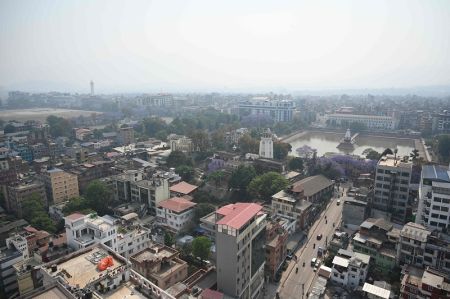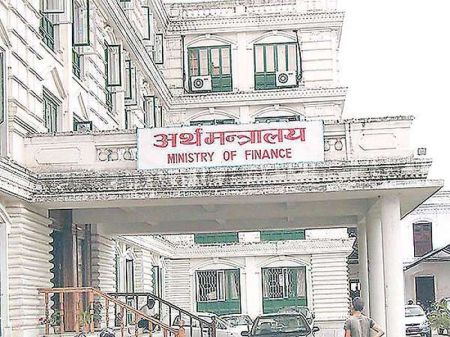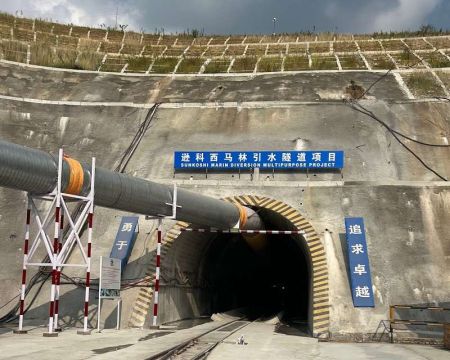 The state of infrastructure in Nepal is far from promising at present, observe experts. While the government is primarily responsible for developing infrastructure in the country, it has more or less failed to live up to expectations largely due to its incapability of making use of available resources and money power. The government’s inability to use the management acumen of the private sector has made matters worse. In recent times, the private sector has made its presence felt in developing infrastructure at its own level, especially in the communication and hydropower sectors.
The state of infrastructure in Nepal is far from promising at present, observe experts. While the government is primarily responsible for developing infrastructure in the country, it has more or less failed to live up to expectations largely due to its incapability of making use of available resources and money power. The government’s inability to use the management acumen of the private sector has made matters worse. In recent times, the private sector has made its presence felt in developing infrastructure at its own level, especially in the communication and hydropower sectors.
According to the world global competitiveness report, in 2009/10, Nepal was placed in 131st position out of 133 countries in the quality of infrastructure. In 2010/11, Nepal’s position further declined to 139th position, the lowest in the fray. This shows a severe need of quality infrastructure and upgrade of the existing ones in the country.
However, figures for basic infrastructure in other sectors are miserable, to say the least. At present, 890 people use one kilometre of road while 87 per cent of energy demand is still met through traditional sources. The government has prioritised infrastructure development from the beginning of planned development in 1956. Nepal spends around 60 to 70 per cent of around Rs 11 billion GDP annually, for infrastructure.
Private Sector Participation
Private sector participation in development of physical infrastructures was formally realised only with the promulgation of act that facilitated private sector investment in 2006. From 1990 to 2007, the private sector invested US$ 404 million in just eight projects of low income category according to World Bank statistics. Out of these, five were in energy and three in telecom sector. The government realising the importance of the private sector involvement in developing infrastructure projects has adopted models like BOT (Build-Operate- Transfer), BOOT (Build-Own-Operate- Transfer), Design-Build-Operate (DBO), Design-Build-Maintain (DBM) etc. These models are in use for foreign partnerships mostly in hydropower projects.

Public-Private Partnership
While the government suffers from capital crunch, the private sector has a profit maximising motive on top of its agenda. Therefore, a model of public-private partnership (PPP) seems to be a viable proposition for infrastructure development purpose. Purusottam Man Shrestha, National Project Manager of Public-Private Partnership for Urban Environment (PPPUE) observes that PPP model remedies the weaknesses of developing projects independently by the private sector or government. He adds, “In the course of maximising profit, the private sector may disregard the interest of general public where the profit tends to get low.
Similarly, public sector is not seen as efficiently handling the projects and managing them, which can be best done by the private sector. The model of PPP can create a win-win situation for both the private and public sector partners.†With this model of development, possible losses can be minimised with the government backing while revenue collection can be best utilised with prudent management skills. In Nepal, few projects in sectors like drinking water, waste management, urban sanitation, solar street lights, bio-gas, urban transportation management like parking space, bus terminal management etc are under consideration, according to Shrestha. All these are projects are at a micro level, mostly developed in coordination with local government-like municipalities.
Large projects under PPP model like Kathmandu-Terai Fast Track, West-Seti A 750 MW project etc have been much discussed but are yet to see the daylight. Shrestha believes projects of small nature can be most suitable at the moment considering the financing capacity of the private sector. Solid waste management, drinking water, health related waste management, transmission line are taken as the best projects under this model.
Health and education are two other sectors that are considered appropriate for this model. R B Rauniar, the Managing Director of Interstate Multi-Modal Transport Pvt Ltd opines PPP is the best model of infrastructure development where there is a possibility of generating revenue as well as the development of basic infrastructure. He further says the frequent changes in policy and lack of national commitment on the political parties and leaders in the government has become the largest barrier for this model to be successful. Experts believe Nepal is yet to make preparations and work out so that this model will be the method of developing required infrastructures for the country.
Physical Infrastructures
Whether the private sector will invest or not in the development industry is dependent on the suitable investment climate and market for a particular infrastructure. The private sector can invest and develop in physical infrastructure like roads where there are alternatives. Alternative and fast track roads, bridges carry potential for private sector where they collect toll from the users. But private sector road developments like toll roads need huge investment which is difficult to manage by the business community alone.
In hydropower and communication sector, there has been encouraging private sector participation. Small and midsized hydropower projects are being developed by this community. In the communication sector, there are large players like Ncell, UTL, and new comers like Smart Telecom and Hello Nepal making their strong presence. Mega projects like the new international airport at Nijgadh in Bara, Kathmandu-Terai expressways and railway lines, mega hydro projects etc are not less viable. The proposed new international airport at Nijgadh could be one of the promising projects.
 Service Infrastructures
Service Infrastructures
The private sector is seen active in developing and operating service infrastructures that are much needed for the general public. Private schools, colleges and hospitals have set a level of quality of services which their public counterparts are unable to compete with. Shrestha said that the issues witnessed in these sectors like over commercialisation can be solved if the PPP model can be used in these areas. He said that this model will help to expand the service over a larger area and larger group of service recipients. This model prevents these basic services from being too profit oriented.
Prospects
The private sector is demanding the development of basic infrastructure, however, very little is heard about the private sector taking initiative in sizeable physical infrastructure projects. Manakamana cable car is one prominent exception in this regard. In fact this project stands testimony that Nepal’s private sector can develop infrastructure projects into profitable ventures. Experts believe there are numerous possibilities where private sector investors can take infrastructure as an investment opportunity. Small and medium projects in urban areas related to parking space, waste management and drinking water are attractive for this sector and identified as easy to develop too, according to Shrestha.
There are projects that garner profitable returns similar to that of any other business endeavours they have been traditionally carrying out. Some believe that development projects can be independently carried out by the private sector while some disagree with it. The latter opine that hard infrastructure development is the primary function and duty of the government. Till date, only 300 MW of total installed capacity of hydropower is produced but the demand is for 1100 MW. Besides, there is a huge market in India too. This underlines a great potential and demand for physical infrastructure.Pradeep Gangol, the Executive Manager of the Independent Power Producers’ Association (IPPAN) reasons, “The private investment is all the more important in poor countries like Nepal, which have limited resources to invest in infrastructural sectors like power, telecommunication, and transportation. If the private sector invests in hydropower, the government can allocate more funds for sensitive sectors like health and education.â€
Bottlenecks
The biggest problem that infrastructure development faces is the financing issue. With the interest rate tremendously high, the rate of return becomes too low for anybody to find an interest in financing infrastructure projects.
Gangol says that time consuming procedure to acquire approval for forest use, environmental approval, procurement and use of explosives and land acquisition for projects also make it difficult to initiate projects. In the hydropower sector, the major problem is the constant price offered by Nepal Electricity Authority (NEA) to independent power producers for the last ten years while the bank interest rates are going up continuously.
The Way Forward
The private sector players accept they are not in a position to develop large scale physical infrastructure at present. Availability of capital to finance these projects is the major hurdle. Though the business community has realised the potential of investing in infrastructure, they are doing so only in areas like hydropower and telecommunication. If the private sector is allowed to bring in foreign soft loan, developing large hydropower or similar revenue generating projects will be possible.
Similarly, Shrestha suggested that the donor agencies should involve themselves in PPP financing as well in addition to financing government projects like the ones at present. The Nepali financial market is still not oriented to PPP projects or infrastructure development. So a special tool can be devised for collecting capital from this market.
Similarly, general public can also be encouraged to invest in infrastructure projects. The governments in the developing countries like Nepal mostly have the budgetary constraints to commence the development projects. Therefore, PPPs can prove to be the alternative source of infrastructure investment. To attract and invite the private sector, first of all, the government must devise a viable project and put a certain amount of money.
Development partners too must look at such projects along with the government projects which will also help make greater impact of the donor funding. It is definite to take few more years when the private sector will gain confidence and prepare itself to develop infrastructure. Though there are hopes and prospects, it is certain that much time is required to see if private sector owned development projects actually become a reality.






















